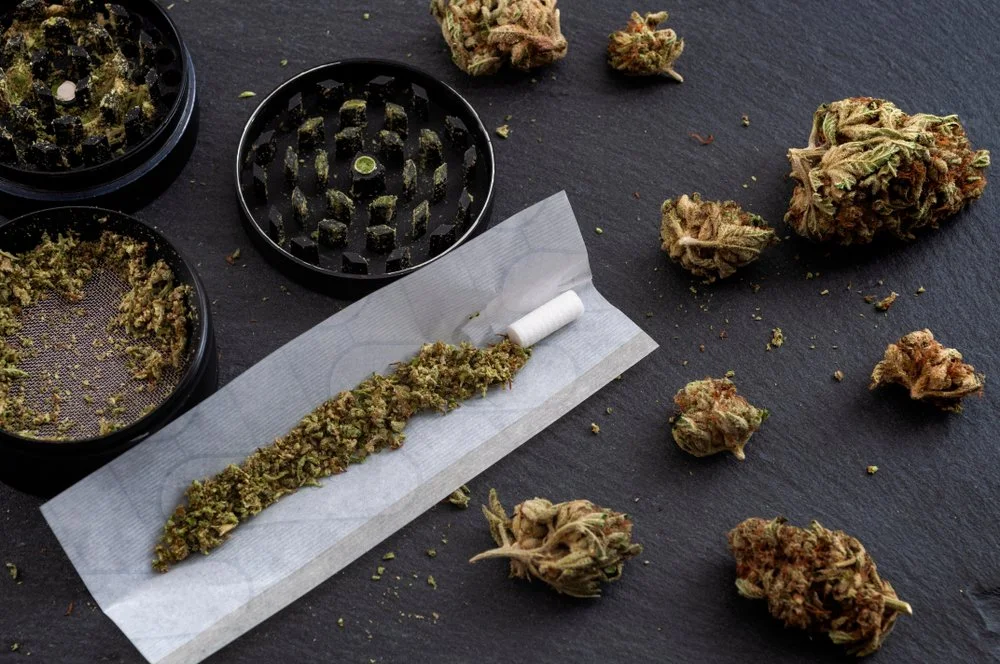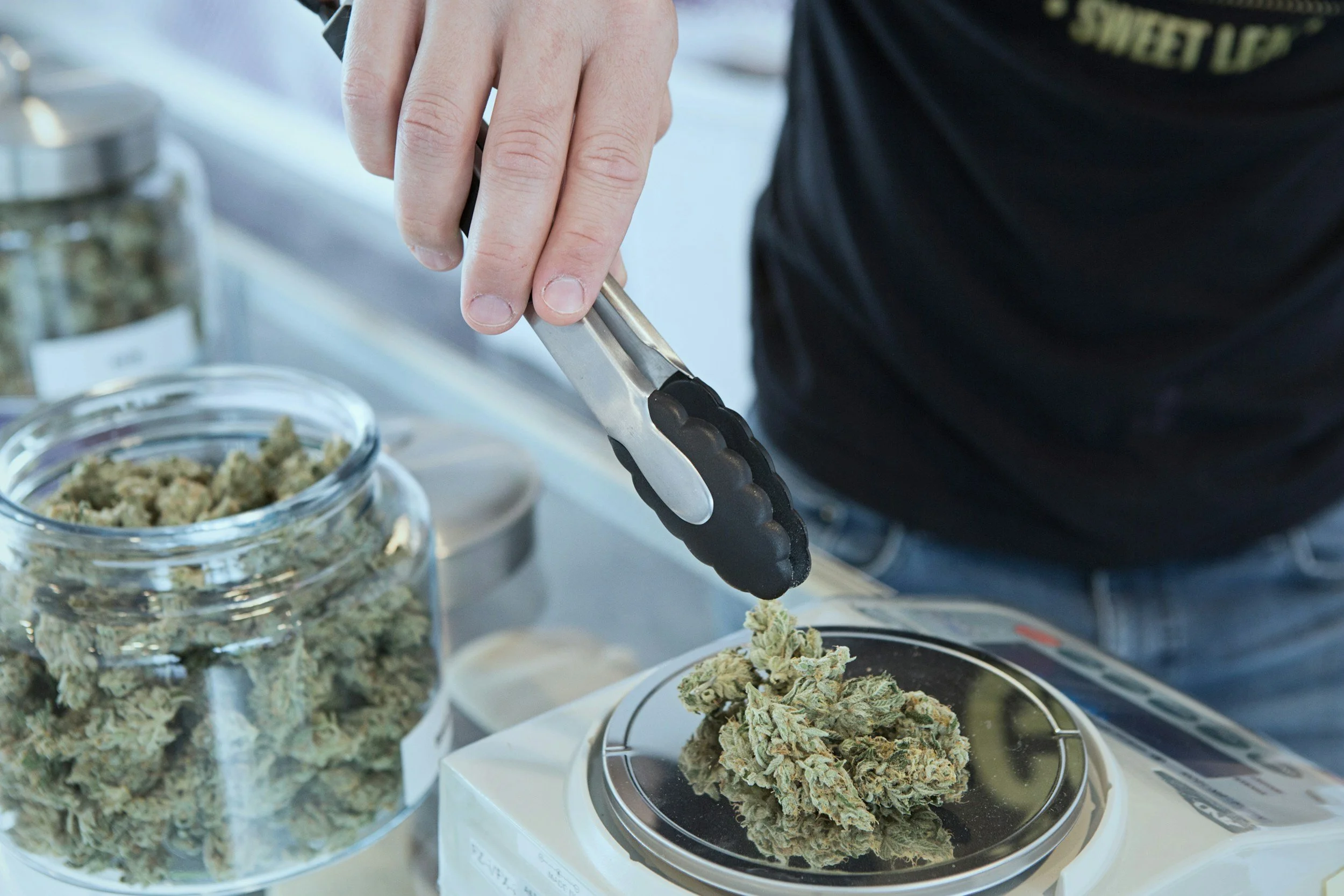Cannabis First Timers: How to Roll a Joint
Introduction
Rolling a joint is a rite of passage for many cannabis users. However, for beginners, it might seem more challenging than it appears. The good news is that with the right tools, technique, and a little practice, you can roll a perfect joint every time.
In this guide, we’ll walk you through the essentials, from selecting the right materials to mastering the art of the roll, ensuring that you can enjoy a smooth and evenly-burning joint.
You May Also Read: Is Medical Marijuana Right for You?
What is a Joint?
A joint is a smokable product containing cannabis, typically rolled by hand using rolling papers made from materials like hemp, rice, or wood pulp. While it resembles a cigarette, joints do not contain tobacco, distinguishing them from spliffs and blunts. With various slang terms like 'J,' 'doobie,' and 'cone,' joints are an iconic and accessible method of consuming cannabis, offering a straightforward and versatile way to enjoy the plant.
Types of Joints
As you dive into cannabis culture, you'll encounter different joint styles, including traditional, tipped, pinner, spliff, cross, backroll, and cone joints. Each has its unique rolling technique, offering diverse smoking experiences:
Traditional Joint: Resembling a cigarillo, this classic joint contains only marijuana and can be rolled with or without a filter tip. It's a straightforward way to consume cannabis – light one end and inhale through the other.
Tipped Joint: Featuring a filter tip for added stability and an improved smoking experience, these joints often use cardboard sheets rolled into a filter.
Pinner Joint: Small, long, and thinly rolled, pinner joints are ideal for those who want to conserve weed or prefer a smaller smoking experience.
Spliff: Popular in Europe, a spliff combines cannabis and tobacco in the smoking paper, providing a unique smoking experience with a euphoric head high.
Cross Joint: Made famous by figures like Seth Rogen and Wiz Khalifa, a cross joint consists of two joints fitted together to form a cross shape, allowing for three lit ends.
Backroll Joint: Rolled backward, this joint ensures minimal paper around the weed by sealing the glued edge first and burning off excess paper before lighting.
Cone Joint: Resembling a baseball bat, cone joints are smaller at the filter end and widen towards the other end, holding more weed and improving airflow during smoking. This is a common style found in pre-rolls at dispensaries.
Each type of joint offers a distinct smoking experience, allowing you to tailor your consumption to your preferences and the occasion.
Related: What's The Difference Between Joints, Blunts, and Spliffs
What You Need to Roll a Joint
Before you begin rolling a joint, it’s essential to gather the right tools. You’ll need a few basic items to ensure a successful roll, and while there are many accessories available on the market, you don’t need to go overboard at first. The key tools are:
Rolling Paper: The paper you choose is crucial for the quality of the joint. The thinner the paper, the better the taste, as thinner papers allow the natural flavor of the cannabis to shine through. Rice paper is a popular choice, with brands like OCB and Vibes leading the way in quality. When you're just starting, stick to classic king-size rolling papers (around 10 cm or 4 inches in length) for an easy-to-handle size.
Tip: A tip, or filter, is often used to make rolling easier and prevent cannabis from getting into your mouth while smoking. While some people prefer to skip this step, using a tip will improve the smoking experience. Beginners should stick to classic cardboard tips, which are easy to use and provide solid structure to your joint.
Grinder: A quality grinder is essential for breaking down your cannabis to the right consistency. A metal, three-chamber grinder is preferred for its durability and efficiency. Avoid using plastic grinders, as they can break and introduce plastic particles into your cannabis.
Rolling Tray: A rolling tray is a helpful accessory to catch any cannabis that might fall out while rolling. It keeps your workspace clean and ensures that no valuable weed is wasted.
Cannabis: Of course, the most important ingredient is fresh cannabis. The quality of the weed is directly related to the smoothness of the smoke and the ease of rolling. Choose high-quality, fresh cannabis that sticks together and grinds easily. Avoid using old, dry cannabis, as it will crumble into dust and be more difficult to work with.
Step-by-Step Guide to Rolling a Joint
Now that you have the necessary tools, let’s dive into the rolling process. The more you practice, the easier it becomes. Follow these simple steps to roll a smooth, evenly-burning joint.
1. Prepare Your Tip
The first step in rolling a joint is preparing the tip (also known as the filter). While pre-made tips are available, you can easily roll your own from a booklet of perforated tips. If you’re using a pre-made tip, simply grab one and set it aside.
If you’re rolling your own, start by tearing a piece of the tip paper from the booklet. Fold it into an “S” or “W” shape by making tiny folds at the ends of the paper and then rolling the rest around the shape. The “W” shape is especially helpful if you’re using finer cannabis, as it prevents the weed from falling into your mouth.
2. Grind Your Cannabis
Once your tip is ready, it’s time to grind your cannabis. Use a grinder to break down the buds into a fine, even consistency. Be sure to remove any stems or seeds, as they can puncture the rolling paper and affect the joint’s burn. Grinding the cannabis helps to create a uniform texture, making it easier to pack the joint and ensuring an even burn when smoking.
3. Clean Your Cannabis
Before adding the cannabis to the rolling paper, spread it out on your rolling tray and use your fingers to sift through it. Look for any leftover stems, seeds, or bits of grinder that might have made their way into the mix. Clean cannabis will result in a smoother smoking experience and prevent any unwanted particles from ending up in your lungs.
4. Set Up Your Rolling Paper
Now that your cannabis is prepped, it’s time to prepare the rolling paper. Lay the rolling paper flat on a clean surface with the crease facing you. The glue side of the paper should be on the inside, and the non-glue side should be facing outward. Make sure the paper is taut, but not too tight, as you don’t want it to rip while rolling.
5. Add the Tip
Next, place your prepared tip at one end of the rolling paper. You can choose which side to place the tip on, but it’s common to use the dominant hand side for comfort. Once the tip is in place, secure it with your fingers. If you’re having trouble keeping it in place, lightly roll the paper around the tip, securing it firmly.
6. Add the Cannabis
With your tip securely in place, it’s time to add the cannabis. Using your non-dominant hand, gently sprinkle the cannabis evenly across the length of the paper. Be careful not to overfill the joint, as it will make rolling difficult. Once you’ve added the desired amount of cannabis, use your fingers to distribute it evenly and get rid of any air pockets. This will ensure an even burn and prevent a "canoeing" effect, where one side burns faster than the other.
7. Roll Your Joint
Now for the most important part—rolling the joint. Gently pinch the edges of the paper and cannabis between your fingers and start to roll the paper back and forth, shaping it as you go. Gradually tuck the paper over the cannabis and tip, starting from the bottom and working your way up. The goal is to make the joint tight but not too tight—an overly tight joint will be difficult to smoke, while a loose one will burn unevenly.
When you reach the glue line, lick the edge of the paper and seal the joint by pressing the paper together. Make sure it’s fully sealed to avoid it unraveling while smoking.
8. Pack the Joint
Once the joint is rolled, gently tap it against a flat surface to pack the cannabis down. This helps ensure an even burn. You can also use a thin tool, such as a pencil or toothpick, to pack the cannabis into the joint. Be gentle—over-packing can cause the joint to tear or become too tight.
9. Twist the End
If you have any leftover paper at the top of the joint, twist it to secure the cannabis inside. This helps prevent any weed from falling out and ensures a clean, sealed end. If the joint is particularly long, you can trim off any excess paper before lighting it.
10. Light and Enjoy
Your joint is now ready to be enjoyed! Light it up at the twisted end and take smooth, slow puffs. Remember, practice makes perfect, so don’t get discouraged if your first few joints aren’t as tight or smooth as you’d like. With time, you’ll develop your own rolling style, and the process will become second nature.
Read Also: How to Safely Store Cannabis: 8 Tips for Maintaining Freshness and Potency
How to Roll a Cross Joint
Rolling a cross joint is a bit more complex, but the result can be a visually striking and conversation-worthy cannabis experience.
Here's how you can roll a cross joint:
Step 1: Roll Two Joints
Start by rolling two joints, one using king-size rolling papers and another with standard-size papers.
Step 2: Poke Holes
Using a pin, needle, or wire, carefully poke a hole through the king-size joint. This hole should be about three-quarters away from the filter tip. Take your time and avoid rushing this process.
Step 3: Enlarge the Hole
Gradually attempt to make the hole larger using your tool. The goal is to create a hole big enough for the thinner joint to fit through.
Step 4: Poke a Hole in the Thin Joint:
Poke a hole through the middle of the smaller joint. This hole should line up with the center of the larger joint, enhancing the airflow in your cross joint. Skipping this step will hinder your ability to draw on the cross joint.
Step 5: Insert the Thin Joint
Slowly push the thin joint through the hole in the king-size joint. Be cautious to ensure the larger joint doesn't break apart during this process.
Step 6: Reinforce with Glue Strips:
Cut glue strips from empty rolling papers. Use these strips to reinforce your cross joint, sealing any air pockets. This step ensures an airtight joint, allowing airflow only through the designated holes and promoting even burning.
How to Roll a Spliff
For those wanting a mix of tobacco and cannabis, rolling a spliff is the way to go. Follow the joint-rolling procedure, but add tobacco to the mix. The ratio depends on personal preference, but a common starting point is 70% weed and 30% tobacco.
Tips for Beginners
Practice: Rolling a joint takes time to master. Don’t be discouraged if your first attempts are a little messy or uneven.
Use Fresh Cannabis: Fresh cannabis is easier to roll and provides a better smoking experience. Dry or old cannabis can crumble into dust, making it difficult to handle.
Roll Tight but Not Too Tight: Aim for a joint that’s packed evenly but not too tight. A joint that’s packed too tight will be hard to smoke, while a loose joint may burn unevenly.
Take Your Time: Rolling a joint is an art, so take your time to get it right. The more you practice, the better your joints will become.
Conclusion
Rolling a joint is a simple yet rewarding process that enhances your cannabis experience. By using the right materials, taking your time, and practicing your technique, you can master the art of rolling and enjoy a smooth, even burn every time. Whether you’re a beginner or an experienced smoker, the key is patience and practice. So gather your supplies, follow these steps, and soon you’ll be rolling joints like a pro.
FAQs
How to grind and roll a joint?
To grind and roll a joint, start by using a good grinder to break down your cannabis into a fine consistency. Once ground, remove any stems and seeds, and set the cannabis aside on a rolling tray. Place a rolling paper in your hands, add the cannabis evenly, roll it into a cylindrical shape, tuck and seal the paper, and twist the end to finish.
Should you roll a joint tight?
A joint should be rolled tightly enough to hold its shape but not so tight that it’s difficult to pull air through. A tightly packed joint allows for an even burn, but over-packing can restrict airflow and make smoking uncomfortable.
What makes the perfect joint?
The perfect joint is one that burns evenly, has a smooth draw, and delivers a consistent flavor. This is achieved by using fresh cannabis, rolling it evenly, ensuring the right amount of tightness, and selecting the right tools, including good quality rolling paper and a well-ground bud.
What's the difference between a joint and a blunt?
The primary difference between a joint and a blunt is the type of paper used. A joint is typically rolled with thin, paper-like rolling papers, while a blunt is rolled using a thick, tobacco-based wrap, often from a cigar, which adds a distinct flavor and can be larger in size.
Why does my joint not pull?
If your joint doesn’t pull properly, it might be rolled too tightly, restricting airflow. It could also be caused by uneven packing, where the cannabis isn’t evenly distributed, or by using cannabis that’s too dry or finely ground, which can clog the joint and prevent air from flowing freely.






